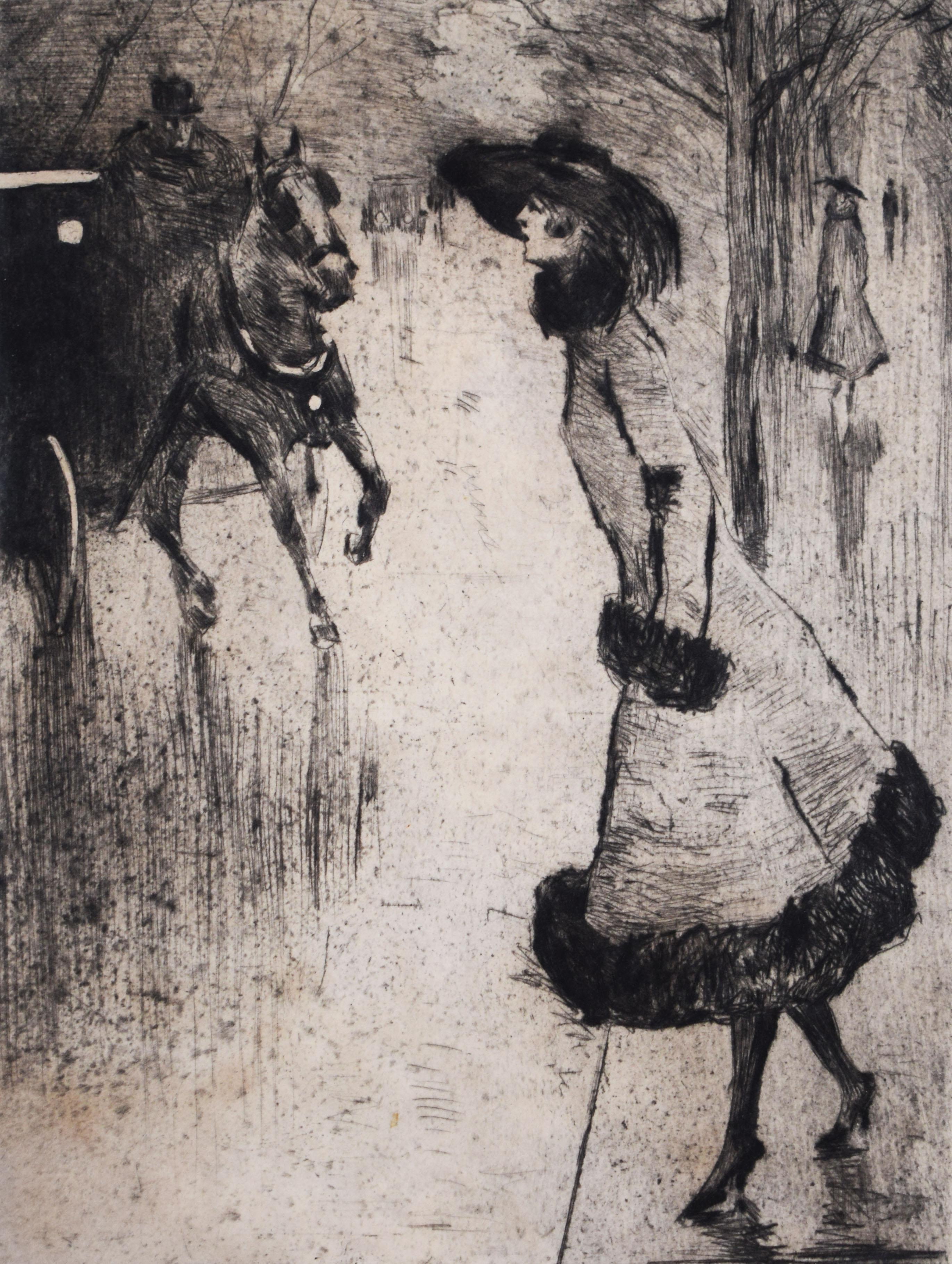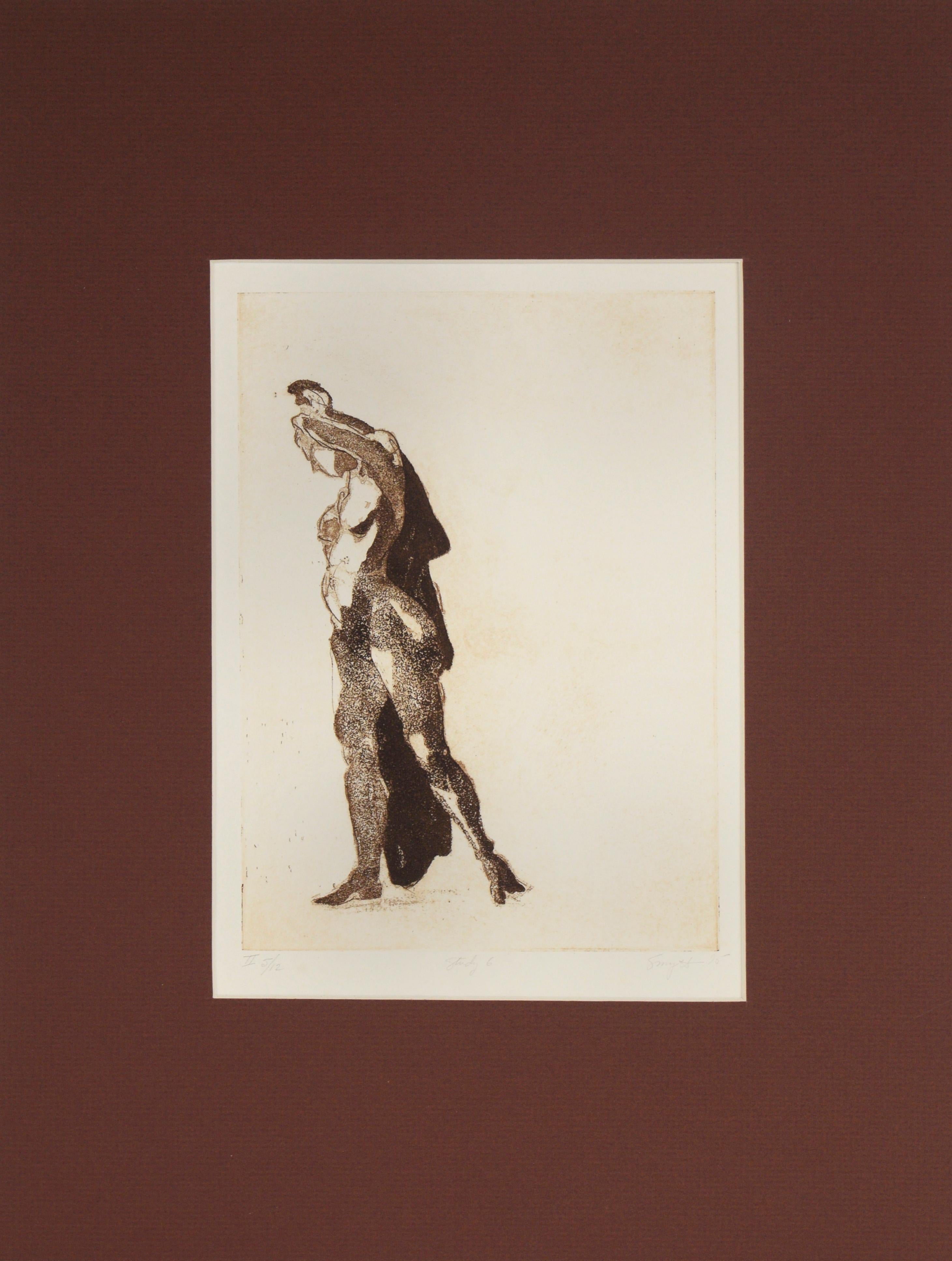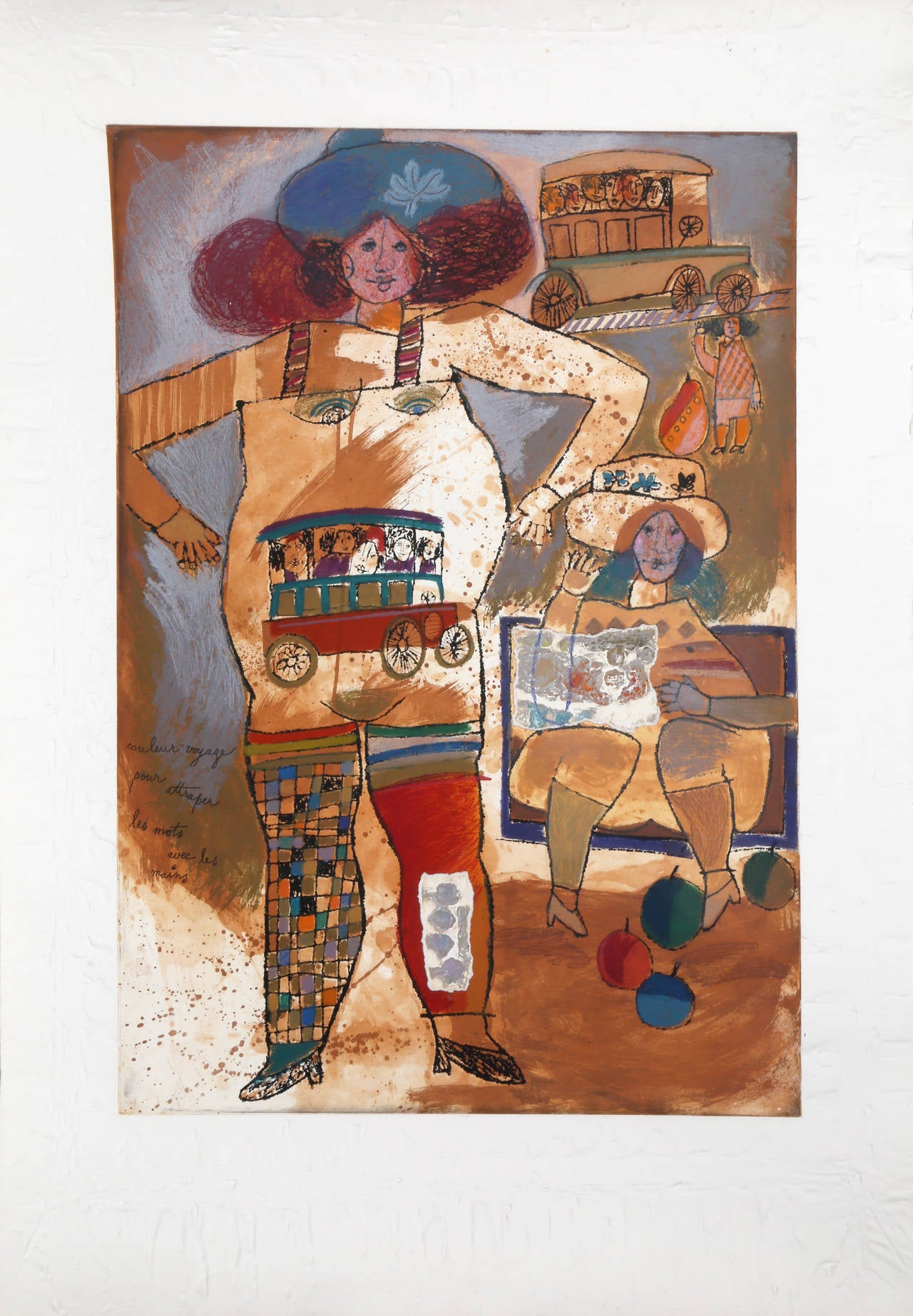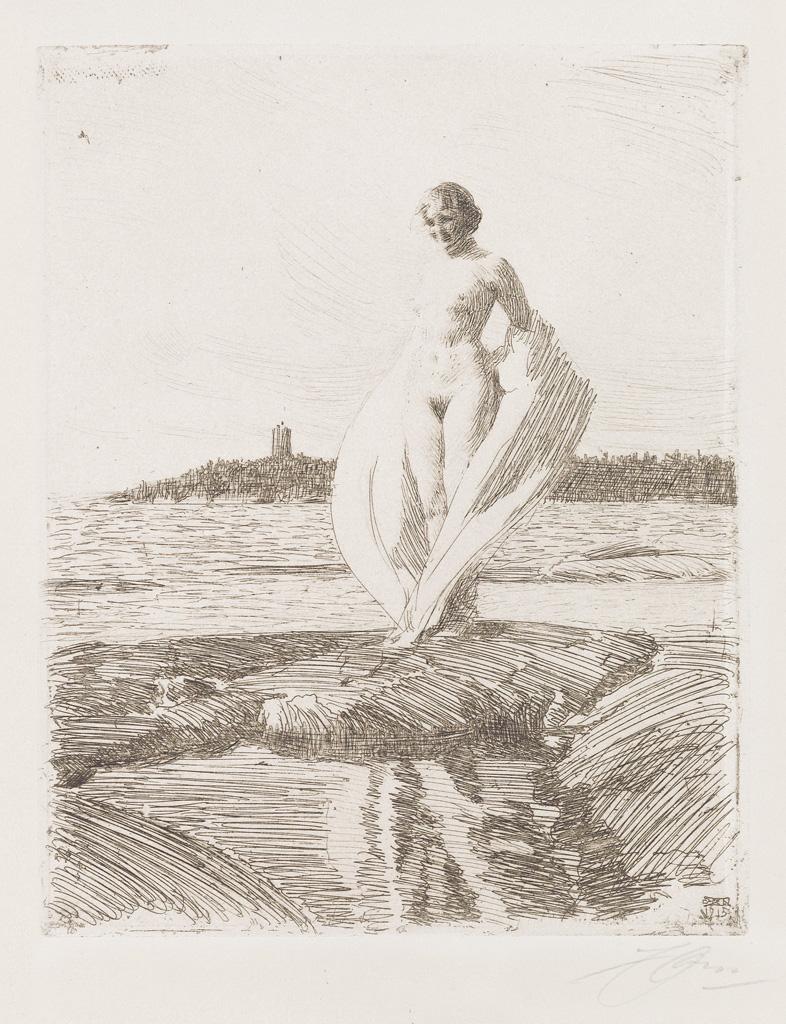Camille PissarroPrairies de Bazincourt by Camille Pissarro - Landscape etching1888
1888
About the Item
- Creator:Camille Pissarro (1831-1903, French)
- Creation Year:1888
- Dimensions:Height: 3.19 in (8.1 cm)Width: 4.73 in (12 cm)
- Medium:
- Movement & Style:
- Period:
- Condition:
- Gallery Location:London, GB
- Reference Number:1stDibs: LU261214154702
Camille Pissarro
Camille Pissarro was one of the most influential members of the French Impressionist movement and the only artist to participate in all eight Impressionist exhibitions.
Born in July of 1830 on the island of Saint Thomas in the Danish West Indies, Camille was the son of Frédéric and Rachel Pissarro. At the age of 12, he went to school in Paris, where he displayed a penchant for drawing. He returned again to Paris in 1855, having convinced his parents to allow him to pursue a career as an artist rather than work in the family import/export business. Camille studied at the Académie Suisse alongside Claude Monet, and, during this time, he met Paul Cézanne, Édouard Manet and Pierre-Auguste Renoir.
In 1869, Camille settled in Louveciennes. The outbreak of the Franco-Prussian War in 1870 prompted him to move to England, and, with Monet, Camille painted a series of landscapes around Norwood and Crystal Palace, while studying English landscape painting in the museums. Upon returning a year later at the end of the War to Louveciennes, Camille discovered that only 40 of his 1,500 paintings — almost 20 years’ work — remained undamaged.
Camille settled in Pontoise in the summer of 1871, remaining there and gathering a close circle of friends around him for the next 10 years. He reestablished relationships with Cézanne, Manet, Monet, Renoir and Edgar Degas, expressing his desire to create an alternative to the Salon, so that their group could display their own unique styles. Camille married Julie Vellay, with whom he would have seven children. Cézanne repeatedly came to stay with them, and, under Camille’s influence, he learned to study nature more patiently, even copying one of Camille’s landscapes in order to learn his teacher’s technique.
The first Impressionist group exhibition, initiated by Monet in 1874, earned the Impressionists much criticism for their art. While mainly interested in landscape, Camille introduced people — generally, peasants going about their rural occupations — and animals into his works, and they often became the focal point of the composition. It was this unsentimental and realistic approach, with the complete absence of any pretense, which seemed to stop his work from finding appreciation in the general public.
One of the few collectors who did show interest in Camille’s work was a bank employee named Paul Gauguin, who, after acquiring a small collection of Impressionist works, turned to Camille for advice on becoming a painter himself. For several years, Gauguin closely followed his mentor, and, although their friendship was fraught with disagreement and misunderstandings, Gauguin still wrote shortly before Camille’s death in 1906: “He was one of my masters, and I do not deny him.”
In the 1880s, Camille moved from Pontoise to nearby Osny, before Eragny, a small village much further from Paris. At a time when he was dissatisfied with his work, in 1885, Camille met both Paul Signac and Georges Seurat. He was fascinated by their efforts to replace the intuitive perceptive approach of the Impressionists with a “Divisionist” method, or scientific study of nature’s phenomena based on optical laws. Despite having reached his mid-50s, Camille did not hesitate to follow the two young innovators. The following year, he passed on this new concept to Vincent Van Gogh, who had just arrived in Paris and was keen to learn of the most recent developments in art. However, after a few years, Camille felt restricted by Seurat’s theories and returned to his more spontaneous technique while retaining the lightness and purity of color acquired during his Divisionist phase.
In the last years of his life, Camille divided his time between Paris, Rouen, Le Havre and Eragny, painting several series of different aspects of these cities, with varying light and weather effects. Many of these paintings are considered among his best and make for an apt finale to his long and prodigious career.
When Camille Pissarro died in the autumn of 1903, he had finally started to gain public recognition. Today his work can be found in many of the most important museums and collections throughout the world.
Find original Camille Pissarro art on 1stDibs.
(Biography provided by Stern Pissarro Gallery)
- ShippingRetrieving quote...Ships From: London, United Kingdom
- Return PolicyA return for this item may be initiated within 7 days of delivery.
- Paysanne au puits by Camille Pissarro - EtchingBy Camille PissarroLocated in London, GBPaysanne au puits by Camille Pissarro (1830-1903) Etching 23 x 19.3 cm (9 x 7 ⁵/₈ inches) Stamped lower left, C.P. and numbered 8/50 Created in 1891 and printed at a later date as a...Category
1890s Impressionist Figurative Prints
MaterialsEtching
- Grand’mère (effet de lumière) (La Mère de l’artiste) by Camille PissarroBy Camille PissarroLocated in London, GBGrand’mère (effet de lumière) (La Mère de l’artiste) by Camille Pissarro (1830-1903) Etching 17.1 x 25.3 cm (6 ³/₄ x 10 inches) Stamped lower right, C.P. an...Category
1890s Impressionist Figurative Prints
MaterialsEtching
- Quai de Paris, à Rouen by Camille Pissarro - Cityscape etchingBy Camille PissarroLocated in London, GBQuai de Paris, à Rouen by Camille Pissarro (1830-1903) Etching 18 x 17.5 cm (7 ¹/₈ x 6 ⁷/₈ inches) Stamped with initials C.P. lower left and numbered 3/13 lower right This etching w...Category
1890s Impressionist Figurative Prints
MaterialsEtching
- La Rue Malpolue, à Rouen by Camille Pissarro - Etching, CityscapeBy Camille PissarroLocated in London, GBLa Rue Malpolue, à Rouen by Camille Pissarro (1830-1903) Etching 19.8 x 15 cm (7 ³/₄ x 5 ⁷/₈ inches) Stamped lower right, C.P. and numbered 18 Created in 1883-84 (printed at a later ...Category
1880s Impressionist Figurative Prints
MaterialsEtching
- Une Femme Assise by Lucien Pissarro - EtchingBy Lucien PissarroLocated in London, GBUne Femme Assise by Lucien Pissarro (1863-1944) Etching 23 x 13 cm (9 x 5 ¹/₈ inches) Stamped lower right, L.P. and numbered lower left, 10/20 Provenance: John Bensusan Butt Private...Category
1890s Impressionist Figurative Prints
MaterialsEtching
- Mère et enfant by Lélia Pissarro - EtchingBy Lelia PissarroLocated in London, GBMère et enfant by Lélia Pissarro (b. 1963) Etching 3 x 3 cm (1 ¹/₈ x 1 ¹/₈ inches) Signed lower left, Lélia Pissarro Inscribed lower right: E.A (artist proof in French) Artist biog...Category
21st Century and Contemporary Impressionist Figurative Prints
MaterialsEtching
- "Harvest (Sugar Beets), " Aquatint Etching by Manuel Robbe, circa 1910By Manuel RobbeLocated in Long Island City, NYThis etching with aquatint was created by French printmaker Manuel Robbe. Robbe’s innovative techniques, along with his sense of color harmony and his choice of subjects: stylish wom...Category
1910s Impressionist Figurative Prints
MaterialsEtching, Aquatint
- Lady Hailing a Carriage Dame, eine Droschke rufend - German ImpressionismBy Lesser UryLocated in London, GBThis original etching and drypoint is hand signed in pencil by the artist "L. Ury" at the lower left margin. It is also hand numbered in pencil from the edition of 150, at the lower ...Category
1910s Impressionist Figurative Prints
MaterialsDrypoint, Etching
- Jean Francois Millet, "La Boullie (The Porridge)", Drypoint Etching, 1861By Jean François MilletLocated in Long Island City, NYEtching printed in brownish black on light tan Chine collé, 1861. Image measures 6 x 5 inches, displayed in a 15.5 x 12.5 inch frame. Etched signature and date lower left. A very goo...Category
1860s Impressionist Figurative Prints
MaterialsDrypoint, Etching, Intaglio
- "Study 6" - 1975 Figurative Lithograph on PaperBy Jim SmythLocated in Soquel, CA"Study 6" - 1975 Figurative Lithograph on Paper Abstract figurative lithograph by Jim Smyth (American, b. 1938). The nude figure is seen with one hand above her head, holding a cloth, as she gazes down. Numbered, titled, signed and dated along bottom. "5/12", "Study 6", "Smyth 75." Presented in a brown mat. Mat: 16"H x 12"W Paper: 10 1/2"H x 8"W Image:9 1/4"H x 6 1/2"W Jim Smyth has studied at the Academia de Belle Arti in Fiorenza, Italy, Ecole des BeauxArts in Geneva, New York Academy, and the Art Students League. He is also a graduate of UC Berkeley with a degree in Fine Art. Although academically trained, Smyth practices and teaches a more impressionistic style of painting, focusing on the Alla Prima technique. He is particularly knowledgeable about drawing, perspective, color theory and the human figure, his passion. Smyth, with extensive academic knowledge, has a profound love of all human representations as illustrated by his humorous quick sketches from life. He also practices and teaches oil painting and pastels. When not in Provence, or Southeastern France, Smyth teaches intensely in art schools, art centers and several colleges in the Bay Area. He is a beloved instructor and his classes fill in quickly as he is very knowledgeable. On his return to the United States, he began studying with Mr. Alanson Appleton at the College of San Mateo, San Mateo, California. Smyth was a founding member of the Appletree Etchers, Inc., an etching print shop organized by Mr. Appleton and his students to develop and promote color intaglio. Smyth served as Master Printer at the studio for many years perfecting the techniques of intaglio and developing the color theories of Mr. Appleton as applied to the deeply etched plate. Smyth received his degree from the University of California, Berkeley, in 1972 and holds the California Community College Certificate and an Adult Education Certificate. Smyth was invited to teach "Anatomy for Artists" at Foothill College, Los Altos Hills, California, as a result of his many years of dissection of the cadaver and developed the course of study of Perspective for the college. During this period, he began teaching Life Drawing at the Pacific Art League of Palo Alto, Palo Alto, California. During the following thirty years Smyth has taught an average of twelve classes per week at the Pacific Art League of Palo Alto, the Palo Alto Art Center and the Burlingame Recreation Department among others in all phases of drawing and painting. He has conducted many workshops for the California Academy of Painters in many aspects of drawing and painting. Currently, he is an Adjunct Professor of Drawing at the College of San Mateo, San Mateo, California. He is an authority on the materials of painting and drawing, techniques of traditional drawing and painting, color theory, perspective and anatomy for artists. In his career in Life Drawing, Smyth has made over two hundred thousand drawings from the model. In addition to studies at Berkeley, Smyth has studied at the College of San Mateo, Foothill College, De Anza College, Mission College, and West Valley College, all in California. One of the pivotal points in his career was studying with Mr. Maynard Dixon Stewart at the University of San Jose, California. He spent a year at the New York Academy of Art where he was offered a full scholarship and at the Art Students League of New York. He concurrently attended classes at the National Academy of Design in New York. Among others, Smyth studied with M. Andrejivec, Ted Schmidt, Elliot Goldfinger, Gary Fagin, Ted Jacobs, Leo Neufeld...Category
1970s American Impressionist Figurative Prints
MaterialsPaper, Ink, Etching, Lithograph
- Couler Voyage Pour Attaper, Aquatint Etching by Theo TobiasseBy Théo TobiasseLocated in Long Island City, NYArtist: Theo Tobiasse Title: Couler Voyage Pour Attaper Year: 1983 Medium: Aquatint Etching with Carborundum, signed and numbered in pencil Image Size: 40 x 28 inches Paper Size: 53....Category
1980s Impressionist Figurative Prints
MaterialsEtching, Aquatint
- The SwanBy Anders ZornLocated in New York, NYA very good impression of this etching printed in dark brown on cream laid paper. Signed in pencil by Zorn. Catalogue reference: Asplund 269; Hjert/Hjert 276Category
1910s Impressionist Nude Prints
MaterialsEtching




